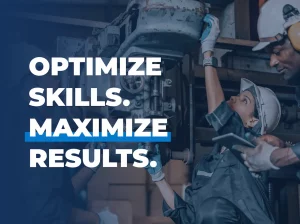
This program is excellent for control personnel and instrument technicians as well as for the multi-craft training needs of process and manufacturing facilities.
This lesson is designed for participants familiar with industrial process control. A knowledge of standard symbols used in process control diagrams, PID control systems, and various process control strategies is also recommended.
This lesson describes the design and operation of various heating and cooling systems utilized in industrial processes. The lesson also presents the principles of heat transfer and its effect on heat exchanger design, In addition, typical control strategies for various heating and cooling systems are presented.
This lesson is designed for participants familiar with industrial process control. A knowledge of standard symbols used in process control diagrams, PID control systems, and various process control strategies is also recommended.
This lesson describes the design and operation of various heating and cooling systems utilized in industrial processes. The lesson also presents the principles of heat transfer and its effect on heat exchanger design, In addition, typical control strategies for various heating and cooling systems are presented.
This lesson is designed for participants familiar with process control. A knowledge of standard symbols used in process control diagrams, PID control systems, and various process control strategies is also recommended.
This lesson introduces the concepts of distillation including the components, operation, and principles of distillation systems. The relationship of process variables such as temperature and pressure is described in relation to the proper operation of a distillation column. The lesson also presents basic and advanced distillation control strategies.
This lesson is designed for participants familiar with process control. A knowledge of standard symbols used in process control diagrams, PID control systems, and various process control strategies is also recommended.
This lesson introduces the concepts of distillation including the components, operation, and principles of distillation systems. The relationship of process variables such as temperature and pressure is described in relation to the proper operation of a distillation column. The lesson also presents basic and advanced distillation control strategies.
This lesson is designed for participants familiar with process control. A knowledge of standard symbols used in process control diagrams, PID control systems, and various process control strategies is also recommended.
This lesson introduces industrial batch process systems. The lesson includes batch process steps, types, and operation as well as batch process control strategies.
This lesson is designed for participants familiar with process control. A knowledge of standard symbols used in process control diagrams, PID control systems, and various process control strategies is also recommended.
This lesson introduces industrial batch process systems. The lesson includes batch process steps, types, and operation as well as batch process control strategies.
This lesson is designed for participants familiar with industrial process control. A knowledge of standard symbols used in process control diagrams, PID control systems, and various process control strategies is also recommended.
This lesson describes the design and operation of various heating and cooling systems utilized in industrial processes. The lesson also presents the principles of heat transfer and its effect on heat exchanger design, In addition, typical control strategies for various heating and cooling systems are presented.
This lesson is designed for participants familiar with industrial process control. A knowledge of standard symbols used in process control diagrams, PID control systems, and various process control strategies is also recommended.
This lesson describes the design and operation of various heating and cooling systems utilized in industrial processes. The lesson also presents the principles of heat transfer and its effect on heat exchanger design, In addition, typical control strategies for various heating and cooling systems are presented.
This lesson is designed for participants familiar with process control. A knowledge of standard symbols used in process control diagrams, PID control systems, and various process control strategies is also recommended.
This lesson introduces the concepts of distillation including the components, operation, and principles of distillation systems. The relationship of process variables such as temperature and pressure is described in relation to the proper operation of a distillation column. The lesson also presents basic and advanced distillation control strategies.
This lesson is designed for participants familiar with process control. A knowledge of standard symbols used in process control diagrams, PID control systems, and various process control strategies is also recommended.
This lesson introduces the concepts of distillation including the components, operation, and principles of distillation systems. The relationship of process variables such as temperature and pressure is described in relation to the proper operation of a distillation column. The lesson also presents basic and advanced distillation control strategies.
This lesson is designed for participants familiar with process control. A knowledge of standard symbols used in process control diagrams, PID control systems, and various process control strategies is also recommended.
This lesson introduces industrial batch process systems. The lesson includes batch process steps, types, and operation as well as batch process control strategies.
This lesson is designed for participants familiar with process control. A knowledge of standard symbols used in process control diagrams, PID control systems, and various process control strategies is also recommended.
This lesson introduces industrial batch process systems. The lesson includes batch process steps, types, and operation as well as batch process control strategies.
This comprehensive interactive multimedia training program was produced in association with the Instrument Society of America. (ISA). This three individual lesson program trains participants how and why control strategies are applied according to process requirements.
This program is excellent for control personnel and instrument technicians as well as for the multi-craft training needs of process and manufacturing facilities.